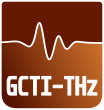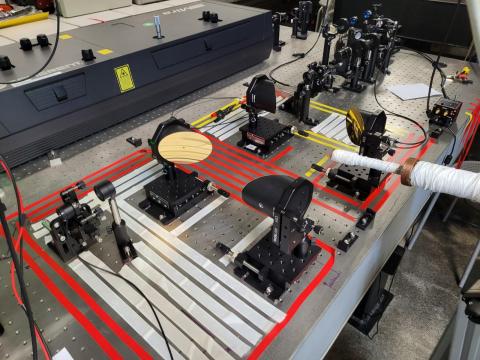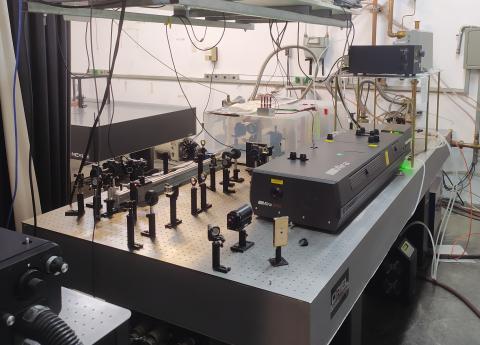Terahertz Time-Domain Spectroscopy
Terahertz (THz) time-domain spectroscopy (THz-TDS) is a valuable tool for material studies. Particularly, it serves as an excellent probe for various low-energy excitations in condensed matter systems, such as intraband transitions, superconducting excitations, phonons, magnons, and plasmons. One of the advantages of THz-TDS over traditional far-infrared spectroscopy based on Fourier-transform spectrometers is its capability to simultaneously measure the amplitude and phase of the THz electric field (transmitted or reflected). This allows the determination of the complex optical conductivity and refractive index of the material.
A terahertz time-domain spectroscopy setup was custom-built in a transmission geometry. THz radiation is generated with a biased photoconductive antenna (PCA) pumped by mode-locked Ti:sapphire laser oscillator (Mira 900 from Coherent) with a pulse duration of 130 fs and a repetition rate of 76 MHz. The THz beam is focused onto the sample with a 3 mm spot diameter using parabolic mirrors. The transmitted beam is collected and probed with another optically gated PCA, allowing for the recording of the THz electric field in the time domain. Low-temperature (10 K) measurements are enabled by mounting the sample inside a cold finger cryocooler equipped with polytetrafluoroethylene windows. The PCAs are commercial products from Menlo and Batop. The picture below (top panel) shows the full system (without the purge box). The bottom panel shows the modification of the setup for optical/pump - terahertz/probe configuration.


